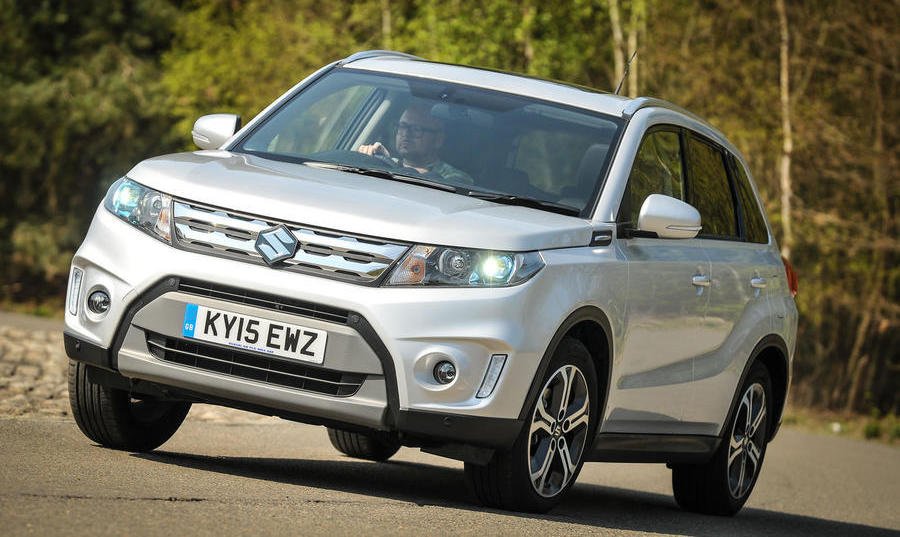The Vitara under the spotlight here is the fourth-generation model launched in 2015. It’s another well-rounded effort from Suzuki that offers more than its unpretentious styling and reasonable pricing suggest. It’s an SUV, of course, but one that justifies the term by being both a competent sports and a convincing utility vehicle in one.
From launch, buyers could choose a 1.6-litre petrol or a 1.6-litre diesel, each with 118bhp. The petrol is smooth and eager and the diesel economical but a bit gruff. They were dropped in the 2019 facelift but the petrol, especially, is good value. Also available from launch was the 1.4-litre Boosterjet, a more modern petrol unit that produces 138bhp and, being turbocharged, is stronger from low revs than the naturally aspirated 1.6 petrol. However, it can be thirsty when pushed hard and early ones are expensive because they’re all four-wheel drive and in top-level S trim.
After the facelift, the engine range amounted to just two units. The 1.4 Boosterjet remained but was now available with two-wheel drive as well as in cheaper trims. Today, you can get into, for example, a 2019-reg two-wheel-drive SZ-T with 20,000 miles for £11,999. This compares with £15,800 for the equivalent Allgrip SZ5, the only trim offered with the four-wheel drive system and 1.4 engine combined. The second engine in the post-2019 line-up is a three-cylinder 1.0-litre Boosterjet. This turbo petrol has a modest 109bhp but is actually quite sprightly and will return around 43mpg at a squeeze. A 2019-reg SZ-T with 15,000 miles is £12,000.
Allgrip four-wheel drive was available from launch on the 1.6-litre engines and the 1.4 Boosterjet. More recently, it became standard on the 1.4 Boosterjet MHEV (mild-hybrid electric vehicle), launched in 2020. The system can shuffle drive between the wheels automatically or, in extremis, can be locked in four-wheel drive, turning the Vitara into a credible off-roader. That said, two-wheel-drive versions can make light off-roading skirmishes without complaint.
Even in cheapest SZ4 trim, the Vitara is well equipped. Alloy wheels, roof rails, a DAB radio, 60:40 rear seats, air-con and front and rear electric windows all feature. It’s followed by SZ-T, which, in turn, is followed by SZ5. This trim has useful features such as LED headlights, parking sensors and radar brake support. The range tops out with S, which, among other things, has Allgrip and hill descent control.
The 2019 facelift brought some soft-touch plastics to the dashboard but the Vitara is a rung or two below rivals for interior ambience. Don’t mistake this for poor quality: the Vitara is a rugged and reliable SUV – as well as capable, well equipped, good value and easy to own.
Need to know
Diesel engine was dropped with the Vitara’s 2019 facelift.
On Allgrip models, check the underside for grounding.
Allgrip has four driving modes but automatic is best because it shuffles drive between the wheels as required.
Hill descent control is a useful off-road feature. Be careful not to exceed the Vitara’s modest towing limits. When launched in 2015, the Vitara scored the full five stars in its Euro NCAP crash tests. An automatic gearbox is available with most engines. Diesel timing belt change falls every five years and is expensive.
Our pick
Suzuki Vitara 1.6: This engine was dropped from the range with the 2019 facelift. It’s an old unit so not the cleanest or most economical but it’s smooth and eager. It’s also great value for money.
Wild card
Suzuki Vitara 1.4 Boosterjet Allgrip S: The sporty member of the Vitara family is fun to drive and well equipped. Thanks to the turbo, in-gear performance is reasonably strong. A 2017-reg example with 50,000 miles is around £11,000.
Ones we found
2015 Vitara 1.6 SZ-T, 82,000 miles, £6495
2017 Vitara 1.6 SZ-T DDiS, 30,000 miles, £10,200
2018 Vitara 1.4 Boosterjet SZ5 Allgrip, 32,000 miles, £15,300
2019 Vitara 1.0 Boosterjet SZ4, 20,000 miles, £9995

